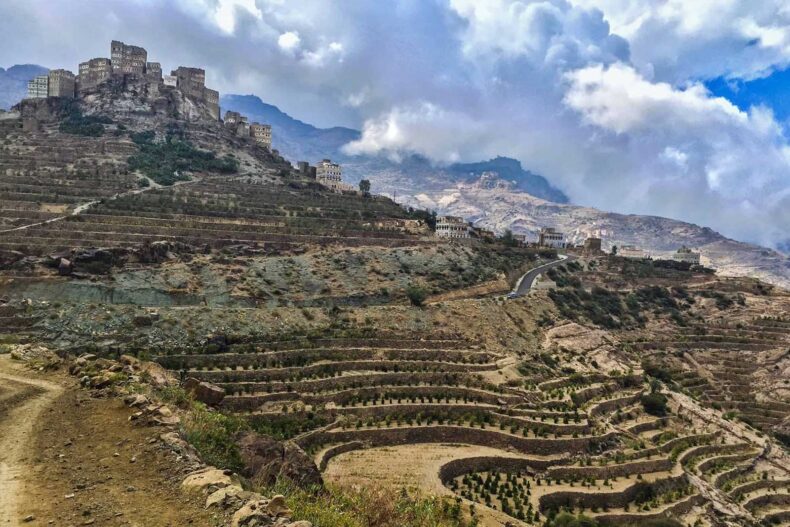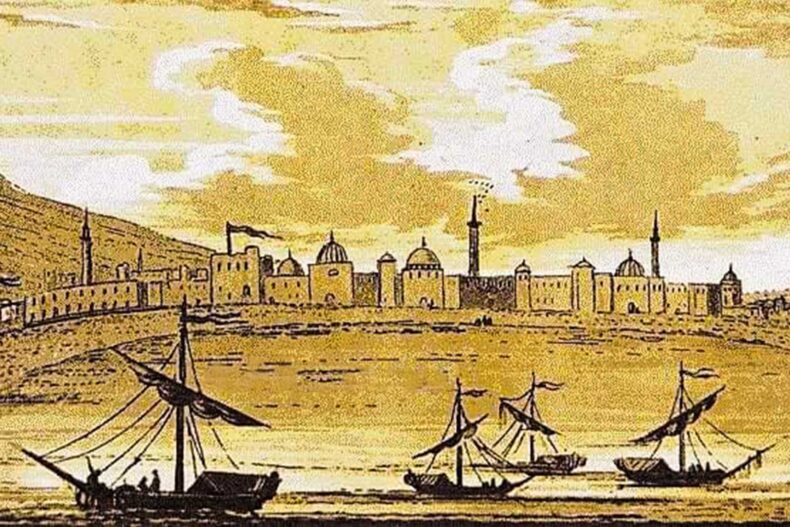
Harvesting Yemeni coffee
The method of coffee cultivation has not changed for more than 500 years, and this may be due to the type of farms in the region. All farms are listed and beautiful in appearance, and most of them are run by families, just like tea plantations.
Cultivation in this way helped the farmer to avoid the use of chemicals, and this coffee is picked by hand, and thus this effect appeared in the quality of the coffee.
Coffee beans are not removed from the fruit in which they grow before they are dried, as many industrial processes depend on them. They are left to dry in special drying periods that occur mainly in caves, although some families use rooftops.
After drying the fruit, we get rough and irregular seeds to a large extent. This is what distinguishes Yemeni coffee and gives it a delicious and strong flavor. Then the time comes when millstones grind it, which is rotated by donkeys or camels.
One of the main reasons why coffee beans are so revered around the world is that only deliciously aged coffee beans are exported outside the country, and this is due to the great diligence and attention paid to every part of the production process that is wonderfully free from industrial machinery.
Where is Yemen located?
Yemen is located in the south of the Arabian Peninsula between Oman and Saudi Arabia at the entrance to the Bab al-Mandab Strait, which connects the enormous Indian Ocean with the commercially important Red Sea.
These altitudes are the main factors in obtaining high-quality coffee that contains the most delicious and delicate flavors, when you combine these heights with drought-prone lands, and you get a distinguished coffee group.

This rugged landscape means that although the quality of the coffee beans that come from this place is high the yield rate is rather low, especially when you stop to compare to other coffees that have garnered attention on the market especially those grown in the western hemisphere .
Where does the best Yemeni coffee grow?
The many requests and questions about Yemeni coffee may be due to its slow production compared to the rest of the types available in the market. This is due to the nature of the surface and agriculture in Yemen.
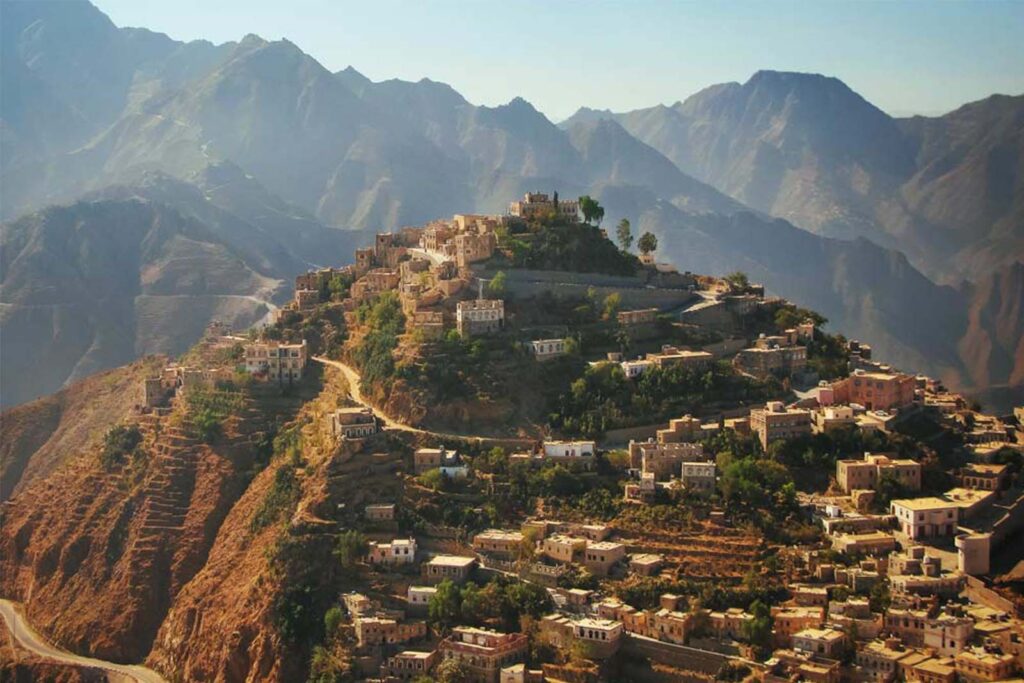
We achieve the best results at an altitude of 2400 meters above sea level, which includes a large part of the country, which in turn leads to coffee cultivation in 4/5 of the regions.
Al-Mahweet, Sana’a, Hajjah, Saada, Sana’a, Hajjah, and Saada are the largest coffee-producing regions in the north, and the western regions are no less important than Al-Yama and Al-Hadalah. If you like comparison, you should pay attention to the available variation in heights.
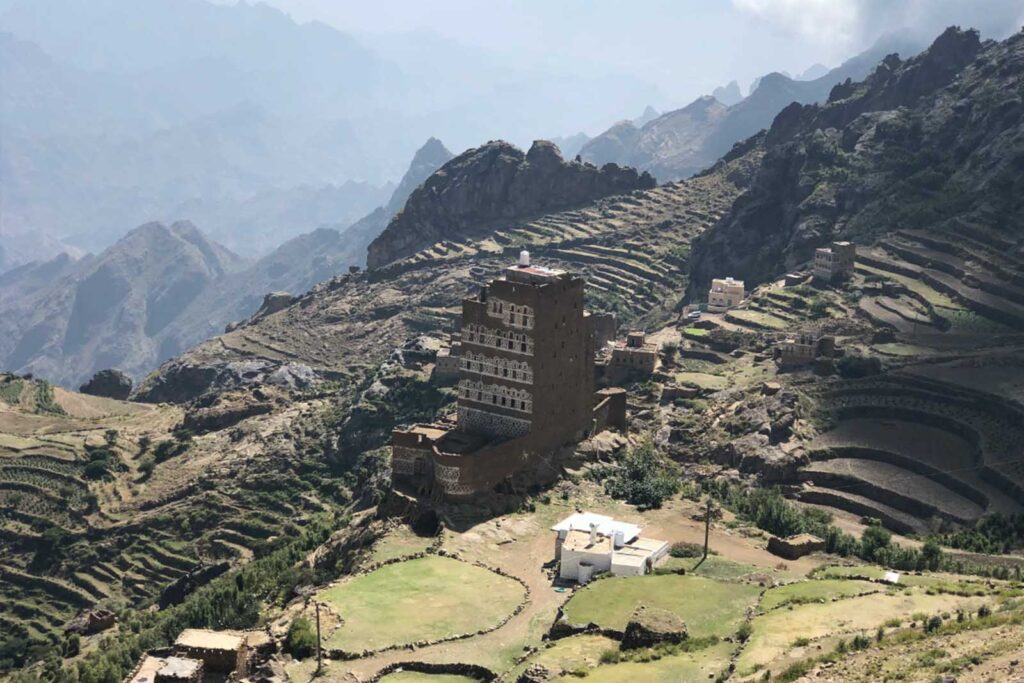
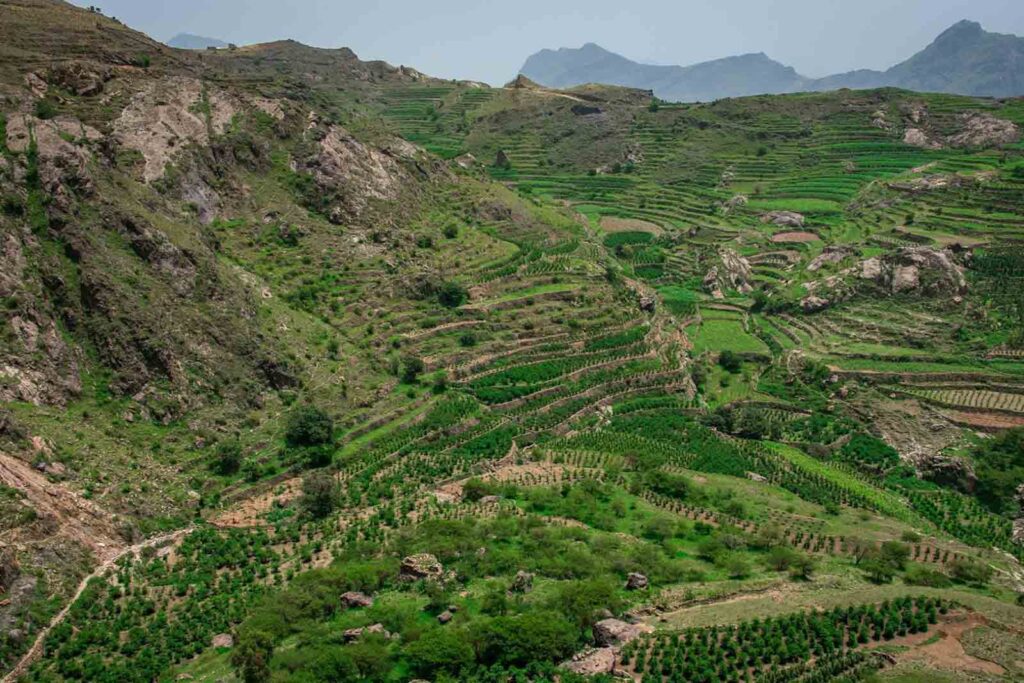
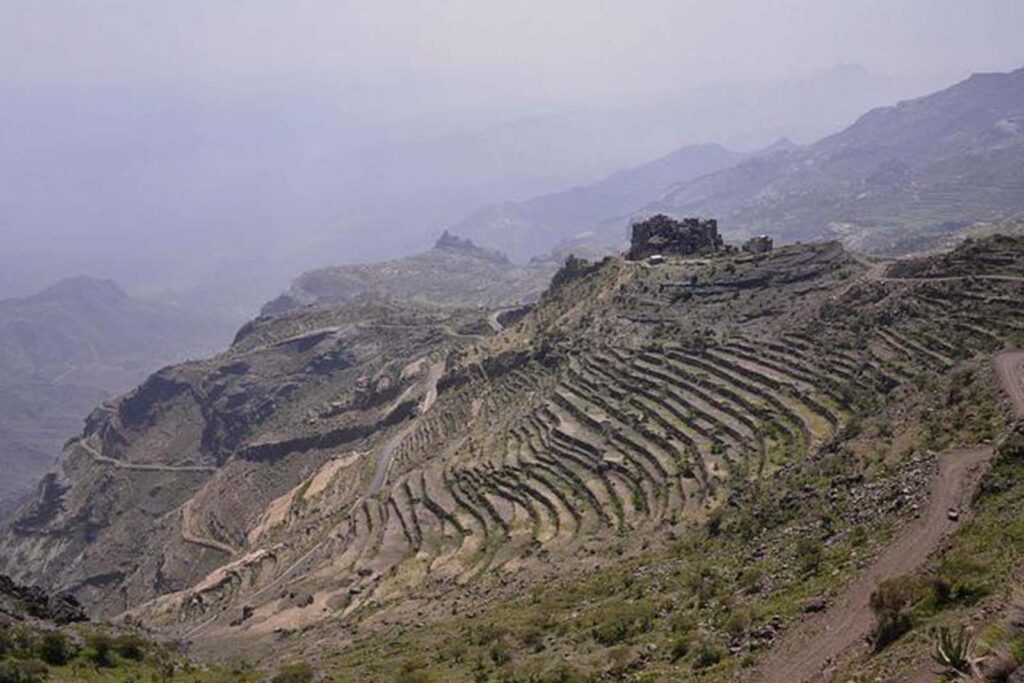
How did coffee become a drink in Yemen?
Most experts agree that coffee began in western Ethiopia. It is believed that nomadic tribes were the first to discover its unique stimulating effects. Then the Ottoman Empire transformed it into a beverage of sorts in the 6th century, leaving the first archaeological evidence of the consumption of the coffee drink in the Yemeni city of Zabid.

Reliable evidence points to the consumption of coffee and knowledge about this important tree for Sufi monasteries around 1450, and was geared towards meeting the needs of the local population as the monks themselves began drinking coffee for the purpose of staying awake during the long periods of prayer at night.
It wouldn’t be long before the story spread all over the Arabian Peninsula and reached many areas that used to be around the Red Sea.
Yemeni culture is associated with the coffee tree, and this makes a lot of sense given the time required to grow, harvest and process Yemeni coffee.
Yemen’s role in the coffee market
Yemen was the first to harvest coffee, which is why it was in a unique position to take advantage of the enormous commercial potential. In the 1500s, this coffee was already exported to Turkey, Persia, and Egypt.

Export expanded at this time, and with the passage of time, many trade routes were established to transport coffee by camel, which in turn improved the status of the coffee industry.
The real turning point was its inclusion in the trading regimes of the Red Sea, and this was the beginning of the way to reach all kinds of huge markets, including India and Turkey.
The taste of Yemeni coffee
Yemeni coffee is characterized by a wonderful and different taste as well as a distinctive and complex aroma. Many refer to its earthy and fruity taste. It also represents the coffee you drink on a cold night because it has the taste of cinnamon, chocolate, and sometimes tobacco, which makes you feel relaxed.
Yemeni coffee is considered by some to be a wild variety and is distinguished by its wonderful, rich body and distinctive acidity, similar to that of wine made from grapes that grow in the mountains.
One of the distinctive types of coffee in Yemen is called (Matari) in relation to its cultivation in the city of Bani Matar, west of the capital, Sana’a. It has a rich taste of chocolate and a taste of wine, and it is more acidic than other types of Yemeni coffee, which makes it a popular choice among coffee lovers with a strong taste.
In contrast, there is Ismaili coffee, which is named after the plant, which has the advantage of being lighter on the taste buds due to its malt-like taste.
Yemeni mocha beans
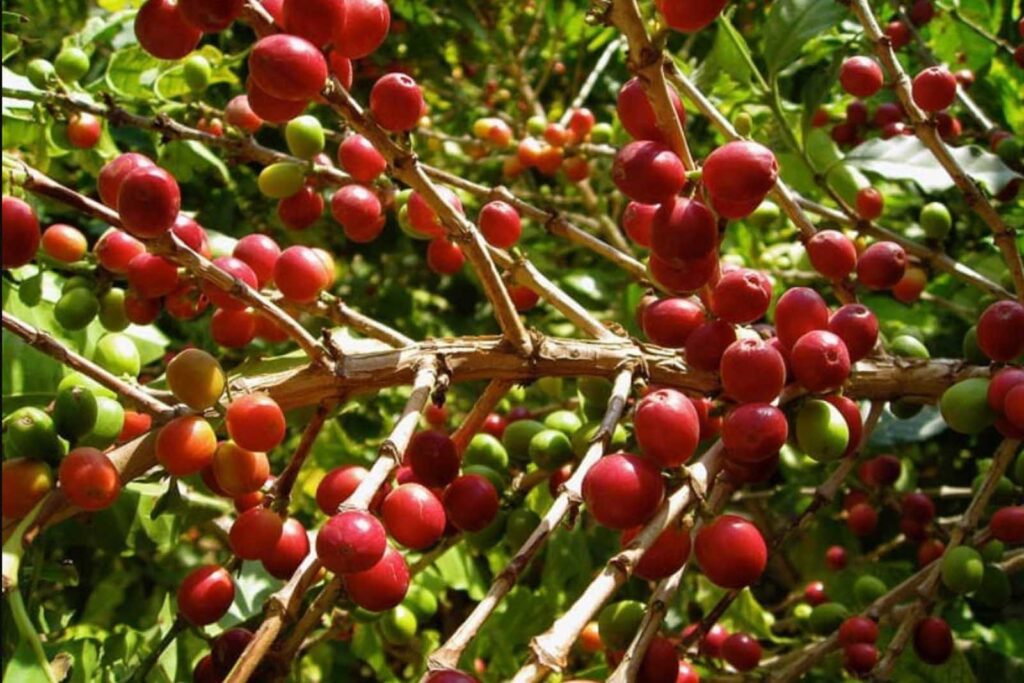
It is a point of pride, and it is one of the famous species around the world, and it was named after one of the ports used to export coffee since the beginning of trade, as the Yemenis searched for new areas for trade in the east, and trade was based on these coffee beans.
Mocha coffee beans have a rich chocolate taste, which is a real treat. They are also characterized by great quality, which makes their price more than normal coffee.
Cherry that has spread all over the world
The traditional and bourbon cherries are the most cultivated types of coffee cherries in many regions far from Yemen.
Bourbon beans originated from the coffee plant grown around the city of Mocha, and are loved by lovers of sweet flavors because of their strong chocolate and buttery aftertaste.
Reference
Yemeni Coffee – All you need to know about Yemeni coffee (social4money.com)
